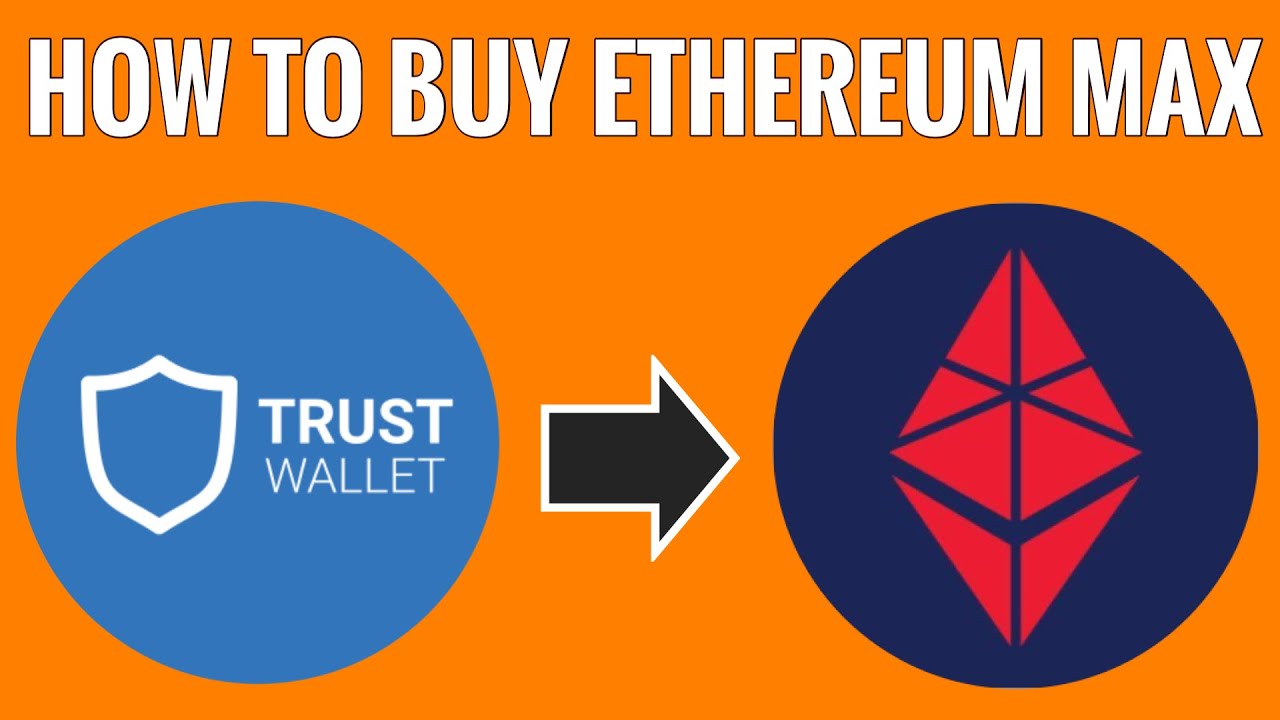Introduction
Welcome to the world of Ethereum, a digital currency and blockchain platform that has gained immense popularity in recent years. As the second-largest cryptocurrency by market capitalization, Ethereum presents an exciting investment opportunity for those looking to diversify their portfolio, participate in decentralized applications, or simply take part in the evolving world of digital assets.
However, before diving headfirst into the world of Ethereum, it is important to understand the factors that should be considered when buying this cryptocurrency. Making informed decisions based on careful analysis and market knowledge can help maximize the potential returns and mitigate the inherent risks associated with investing in a volatile asset like Ethereum.
In this article, we will explore the key factors to consider when buying Ethereum. Whether you are a seasoned investor or a newcomer to the world of cryptocurrencies, understanding these factors will empower you to make more informed decisions and increase your chances of success in the Ethereum market.
Note: Investing in cryptocurrencies carries inherent risks, and it is important to conduct thorough research and seek professional advice before making any investment decisions.
Factors to consider when buying Ethereum
When considering buying Ethereum, there are several factors that should be taken into account in order to make a strategic and informed investment. These factors include:
- Market volatility: Ethereum, like other cryptocurrencies, is known for its high volatility. Before buying Ethereum, it is crucial to assess your risk tolerance and investment goals. While volatility can provide opportunities for higher returns, it also carries the potential for significant losses.
- Overall market conditions: Keep an eye on the broader cryptocurrency market conditions. Factors such as regulatory developments, market trends, and global economic indicators can impact the performance of Ethereum. It’s important to analyze the larger market landscape before making any investment decisions.
- Technical analysis: Utilize technical analysis to assess the price chart patterns, trends, and indicators. This analysis can provide insights into potential entry and exit points, support and resistance levels, and overall market sentiment. Technical analysis helps to make more informed and strategic decisions amidst the frequent price fluctuations.
- Fundamental analysis: Consider the fundamental value of Ethereum. Evaluate the project’s technology, potential use cases, development team, partnerships, and overall adoption. A strong fundamental foundation can indicate long-term growth potential for Ethereum.
- Risk management: Determine how much you are willing to invest in Ethereum and set appropriate risk mitigation strategies. Diversify your investment portfolio and avoid putting all your eggs in one basket. Consider utilizing stop-loss orders or setting risk tolerance levels to protect yourself against potential losses.
- Cryptocurrency exchanges: Choose a reputable and reliable cryptocurrency exchange to buy Ethereum. Ensure the exchange has a strong security framework, a user-friendly interface, and reasonable transaction fees. Research and compare different exchanges to find the one that best suits your needs.
- Wallet security: Consider the security of your Ethereum holdings. Use hardware wallets or cold storage options to safeguard your assets from potential cyber threats and hacking attempts. Research and follow best practices for wallet security to minimize the risk of losing your Ethereum holdings.
By considering these factors, you can make more informed decisions when buying Ethereum, enhancing your chances of success in the volatile and ever-evolving cryptocurrency market.
Technical analysis
Technical analysis is a widely used approach for evaluating the price movements and trends of cryptocurrencies like Ethereum. It involves analyzing historical price data, chart patterns, and various technical indicators to make predictions about future price movements.
When conducting technical analysis on Ethereum, there are several key elements to consider:
- Price chart patterns: Look for recurring patterns on the Ethereum price chart, such as triangles, double tops or bottoms, and head and shoulders patterns. These patterns can provide insights into potential trend reversals or continuation patterns.
- Support and resistance levels: Identify key support levels, where the price has historically found buying interest, and resistance levels, where selling pressure has caused the price to reverse. These levels can help determine potential entry and exit points in the market.
- Technical indicators: Utilize technical indicators like moving averages, Relative Strength Index (RSI), and MACD to identify potential overbought or oversold conditions and gauge market momentum. These indicators can provide confirmation or divergence signals when analyzing Ethereum’s price movements.
- Volume analysis: Pay attention to volume levels when analyzing Ethereum. Volume can indicate the strength of a price movement and the level of market participation. Higher trading volume during bullish price movements can suggest a stronger trend.
- Timeframes: Different timeframes can reveal different insights about Ethereum’s price action. Consider analyzing both shorter timeframes, like hourly or daily charts, as well as longer timeframes, like weekly or monthly charts, to get a comprehensive view of the market trends.
- Market sentiment: Take into account the overall market sentiment and investor psychology. News, social media trends, and community sentiment can influence the price of Ethereum. Sentiment analysis can provide additional insights to support technical analysis findings.
It is important to note that technical analysis is not foolproof and should be used in conjunction with other forms of analysis, such as fundamental analysis. It is also crucial to stay updated with the latest market developments and adjust your analysis accordingly.
By incorporating technical analysis into your investment strategy, you can gain a deeper understanding of Ethereum’s price movements and potentially identify profitable trading opportunities.
Fundamental analysis
Fundamental analysis is an essential approach for evaluating the intrinsic value of Ethereum and assessing its long-term growth prospects. By examining the underlying factors that drive the cryptocurrency’s value, fundamental analysis provides insights into whether Ethereum is undervalued or overvalued in the market.
Here are some key elements to consider when conducting fundamental analysis on Ethereum:
- Technology and use cases: Evaluate the technology behind Ethereum and its potential use cases. Consider the scalability, security, and functionality of the Ethereum blockchain, as well as its ability to support decentralized applications (dApps) and smart contracts. Identify real-world applications and industries that can benefit from Ethereum’s capabilities.
- Development team and leadership: Research the development team and leadership behind Ethereum. Assess their experience, expertise, and track record in the blockchain and cryptocurrency space. A strong and dedicated team can greatly contribute to the success and future development of Ethereum.
- Partnerships and collaborations: Investigate the partnerships and collaborations that Ethereum has established with other organizations, including businesses, governments, and academic institutions. Strategic partnerships can enhance Ethereum’s adoption and pave the way for new opportunities and developments in the ecosystem.
- Community and adoption: Analyze the size and engagement of the Ethereum community. Consider the number of active developers, contributors, and users within the Ethereum ecosystem. Higher community involvement and adoption can indicate a strong network effect and potential for future growth.
- Regulatory environment: Stay informed about the regulatory landscape surrounding Ethereum. Government regulations and policies can have a significant impact on the adoption and acceptance of cryptocurrencies. Assess the legal framework and regulatory developments to gauge the potential risks and opportunities for Ethereum.
- Market competition: Consider the competitive landscape within the blockchain and cryptocurrency industry. Analyze other blockchain platforms and cryptocurrencies that offer similar features and functionalities to Ethereum. Assess the advantages and disadvantages of Ethereum compared to its competitors.
- Economic factors: Keep an eye on macroeconomic indicators and global market trends. Factors such as inflation, interest rates, and overall market sentiment can impact the demand for cryptocurrencies as alternative investment assets. Consider the broader economic landscape when evaluating Ethereum’s long-term potential.
By conducting fundamental analysis, you can gain a deeper understanding of Ethereum’s underlying value proposition and make more informed investment decisions based on the cryptocurrency’s long-term growth prospects.
Market sentiment
Market sentiment plays a crucial role in the price fluctuations and trends of cryptocurrencies like Ethereum. It refers to the overall attitude and emotions of market participants towards a particular asset or market. Understanding and analyzing market sentiment can provide valuable insights into the potential direction of Ethereum’s price movements.
Here are the key aspects to consider when assessing market sentiment in relation to Ethereum:
- News and media coverage: Monitor news articles, media coverage, and social media discussions related to Ethereum. Positive news and favorable media attention can create a bullish sentiment, while negative news and skepticism can lead to a bearish sentiment. Stay updated with the latest developments and news that may impact the perception of Ethereum in the market.
- Social media trends: Analyze the sentiment expressed by the Ethereum community on social media platforms. Stay engaged with discussions and forums dedicated to Ethereum. Look for patterns of excitement or concerns expressed by users, as this can influence the overall sentiment towards the cryptocurrency.
- Sentiment analysis tools: Utilize sentiment analysis tools that use natural language processing algorithms to gauge the sentiment expressed in social media or news articles. These tools can provide quantitative measures of positive, negative, or neutral sentiment towards Ethereum, helping you understand the prevailing sentiment in a more data-driven manner.
- Investor psychology: Emotions and psychological factors significantly impact market sentiment. Fear, greed, optimism, and pessimism can drive the buying and selling decisions of market participants. Understanding investor psychology can provide insights into potential market trends and reversals.
- Market indicators: Explore market indicators that reflect the sentiment of traders and investors. For example, the Crypto Fear and Greed Index measures the overall sentiment in the cryptocurrency market, including Ethereum. Additionally, options and futures data, such as the Put/Call ratio or open interest, can provide insights into the sentiment and positioning of market participants.
It is important to note that market sentiment should be used in conjunction with other forms of analysis, such as technical and fundamental analysis. While sentiment can be a powerful force in driving short-term price movements, it is essential to interpret it within the context of the broader market landscape.
By assessing market sentiment, you can gain valuable insights into the prevailing attitudes and emotions towards Ethereum, helping you make more informed investment decisions.
Timing the market
Timing the market refers to the act of buying or selling assets, such as Ethereum, based on speculative predictions of future price movements. While attempting to time the market can be challenging and unpredictable, some investors believe that strategic timing can lead to profitable investment opportunities. However, it is important to approach market timing with caution and consider the following factors:
- Price trends: Analyze historical price data and identify patterns and trends in the Ethereum market. Look for signs of bullish or bearish trends, as well as potential support and resistance levels. The goal is to enter the market during an uptrend and exit before a significant downturn.
- Technical analysis: Utilize technical analysis to identify potential entry and exit points based on chart patterns, indicators, and other technical factors. Technical analysis can provide insights into market sentiment and help determine optimal timing for entering or exiting a position.
- Market cycles: Consider the cyclical nature of the cryptocurrency market. Cryptocurrencies, including Ethereum, often go through periods of bullish rallies followed by corrective phases or bear markets. Observing market cycles can help identify potential optimal entry points during market corrections.
- Fundamental developments: Stay informed about the fundamental developments surrounding Ethereum. Positive news, such as significant partnerships, technological advancements, or regulatory approvals, can drive the price upward. Anticipating and acting upon such developments can potentially yield favorable investment outcomes.
- Risk tolerance: Assess your risk tolerance and investment goals. Timing the market is inherently risky and can result in losses if not executed effectively. Be aware of your risk appetite and only allocate funds that you are comfortable risking in potentially volatile market conditions.
- Market sentiment: Keep a close eye on market sentiment and investor psychology. Sentiment can impact short-term price movements, and identifying periods of extreme fear or greed among investors can provide potential opportunities for market timing.
It is important to note that successfully timing the market is challenging, and even experienced investors may struggle to consistently make accurate predictions. Additionally, market timing strategies can be influenced by emotional biases and herd behavior.
An alternative approach to timing the market is to adopt a long-term investment strategy, focusing on the fundamentals of Ethereum and its potential for growth over time. This strategy, known as dollar-cost averaging, involves investing fixed amounts of capital at regular intervals regardless of short-term market fluctuations. This approach can help reduce the impact of market volatility and potentially yield positive results in the long run.
Ultimately, the decision to time the market or adopt a long-term investment strategy depends on your risk tolerance, investment goals, and confidence in your ability to predict short-term price movements. It is important to thoroughly research and understand the associated risks before engaging in market timing strategies.
Dollar-cost averaging
Dollar-cost averaging (DCA) is an investment strategy that involves consistently investing a fixed amount of money at regular intervals, regardless of the asset’s price. This approach aims to mitigate the impact of short-term market volatility and allows investors to accumulate assets over time.
Here’s how dollar-cost averaging works:
- Consistent investments: With dollar-cost averaging, you commit to investing a fixed amount regularly, such as monthly or quarterly, regardless of the asset’s price. This approach eliminates the need to time the market and removes the emotional bias that can come with trying to buy at the perfect moment.
- Buying more when prices are low: One of the main benefits of DCA is that it enables you to buy more of an asset when prices are lower. For example, if you invest $100 every month in Ethereum and the price is low, you will be able to purchase more Ethereum compared to when the price is high.
- Averaging out your investment: Over time, dollar-cost averaging helps average out the purchase price of your assets. By consistently investing over a long period, you are less affected by short-term market fluctuations and have the potential to benefit from the overall upward trajectory of the asset’s value.
- Reducing the impact of market volatility: DCA helps reduce the impact of market volatility on your investment. It minimizes the risk of making a substantial investment at the peak of a market cycle and potentially suffering significant losses. Instead, you take advantage of both market dips and rallies, smoothing out the impact of price fluctuations.
- Discipline and automation: DCA promotes a disciplined investment approach by automating regular investments. This strategy helps avoid emotional decision-making based on short-term market noise and allows you to stay focused on your long-term investment goals.
While dollar-cost averaging can be an effective strategy for long-term investors, it is important to consider the overall market conditions and potential risks associated with the asset. While DCA can help mitigate risk, it does not guarantee profits or protect against losses.
Before implementing a dollar-cost averaging strategy with Ethereum or any other asset, it is important to assess your financial situation, risk tolerance, and investment goals. Additionally, staying updated with the latest market trends and conducting thorough research can help inform your investment decisions during the DCA process.
By consistently investing a fixed amount over time, regardless of short-term price fluctuations, dollar-cost averaging allows you to build your Ethereum position steadily and potentially benefit from the long-term growth of the asset.
Setting a target price
Setting a target price is an important aspect of investing in Ethereum or any other asset. It involves determining a desired selling price at which you plan to exit your investment to secure profits or limit potential losses. While predicting the exact future price of Ethereum is impossible, setting a target price helps guide your decision-making process and provides a framework for taking profits or cutting losses.
Here are some factors to consider when setting a target price for your Ethereum investment:
- Profit-taking strategy: Consider your investment goals and desired returns. Determine the level of profit you are comfortable with and set a target price accordingly. This can be a fixed percentage gain, a specific price level based on technical analysis, or a combination of factors that align with your investment strategy.
- Technical analysis: Utilize technical analysis to identify potential resistance levels or indicators that suggest a potential reversal or cooling off of Ethereum’s price. These levels can serve as potential target prices where you might consider selling a portion or all of your Ethereum holdings.
- Market conditions: Assess the overall market conditions and prevailing sentiment towards Ethereum. This includes factors such as market trends, news, and investor sentiment. Setting a target price can help you take advantage of bullish market conditions or protect your investments during bearish periods.
- Risk management: Consider your risk tolerance and the potential downside risk of holding Ethereum. Setting a target price can help you define your risk-reward ratio and limit potential losses by determining the price level at which you are willing to exit your position.
- Long-term versus short-term goals: Differentiate between short-term and long-term investment strategies. If you have a long-term investment horizon and believe in the potential of Ethereum, you might set a higher target price to capture potential long-term gains. For short-term traders, setting a target price aligned with their trading strategy is crucial.
- Reassessment and flexibility: Keep in mind that the target price you set may need to be periodically reassessed based on changing market conditions. Stay updated with the latest news and developments that can impact Ethereum’s price. Be open to adjusting your target price if new information becomes relevant.
It is essential to note that setting a target price does not guarantee that Ethereum will reach that price level. Market dynamics and price movements can be unpredictable. Regularly reviewing and adjusting your target price based on evolving market conditions can help you make more informed decisions.
Additionally, it is important to remember that selling all of your Ethereum holdings at the target price may not always be the best approach. Consider scaling out of your position or taking partial profits, allowing you to capture gains while still potentially benefiting from further price appreciation.
Setting a target price helps provide a framework for your investment strategy and aids in making informed decisions regarding your Ethereum holdings. By assessing various factors and staying vigilant in monitoring market conditions, you can set realistic and strategic target prices for your Ethereum investments.
Conclusion
As you consider buying Ethereum, it is important to take a comprehensive approach that incorporates various factors and strategies. Understanding the market dynamics, conducting technical and fundamental analysis, and considering market sentiment are all essential aspects of making informed investment decisions.
Fundamental analysis helps you evaluate Ethereum’s underlying value proposition and its potential for long-term growth. By assessing technology, partnerships, community adoption, and regulatory factors, you can gain insights into the cryptocurrency’s future prospects.
Technical analysis allows you to analyze historical price data, chart patterns, and indicators to identify potential entry and exit points. This approach helps you make more informed decisions based on market trends, support, and resistance levels.
In addition, considering market sentiment provides valuable insights into the prevailing attitudes and emotions towards Ethereum. Monitoring news, social media trends, and sentiment analysis tools allows you to gauge the overall sentiment of the market and potentially capitalize on market trends.
Timing the market can be challenging and unpredictable. While some investors may attempt to time their entry and exit points based on short-term price movements, it is important to approach market timing with caution. Dollar-cost averaging offers an alternative strategy, allowing you to accumulate Ethereum over time and mitigate the impact of market volatility.
Lastly, setting a target price provides a framework for your investment strategy. By defining your profit-taking or risk management goals, you can make more informed decisions about when to sell your Ethereum holdings.
Remember, investing in Ethereum and other cryptocurrencies carries inherent risks. It is crucial to conduct thorough research, seek professional advice, and stay informed about the latest market developments. By staying disciplined, managing your risk, and continuously educating yourself, you can navigate the dynamic world of Ethereum and potentially achieve your investment objectives.

























